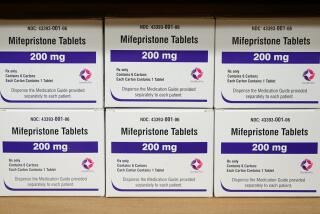Drug industry swag
- Share via
WHEN A PATIENT GETS a prescription from her doctor, she shouldn’t have to worry that the drug was selected because of a pharmaceutical company’s marketing skills. That’s why Stanford University Medical Center’s announcement this week that it’s no longer allowing physicians to accept gifts from pharmaceutical sales representatives is so refreshing. No more free lunches. No drug samples. Not even those cute mugs. It’s an austere measure that other medical centers should follow.
The relationship between pharmaceutical companies and physicians -- their protestations to the contrary -- is uncomfortably close. The drug industry doles out $21 billion a year in marketing (90% directed at physicians), far more than it spends on consumer advertising. And it’s often money well spent; studies have shown that even small gifts increase doctors’ sense of obligation to pharmaceutical makers, especially free drug samples that clearly sway decisions to stick with expensive medications that often aren’t any more effective than cheaper competitors.
The drug industry says such bans, which also have been enacted in the last two years by Yale University and the University of Pennsylvania, will make it more difficult for doctors to interact with and learn from sales representatives. This is true. But so what? Drug reps typically keep physicians up to speed on pharmaceutical pipelines and medical research, something research shows doctors don’t do enough on their own. But physicians, who control patients’ lives with their decisions, must be held to the highest ethical standards possible to ensure that those decisions are based on the best empirical knowledge, not personal gain or social proximity.
Stanford’s decision also is further proof that voluntary drug industry guidelines aren’t working, as if that is a surprise. After threats from Congress to crack down on industry swag, manufacturers agreed in 2002 to limit gifts to those of “modest value.” Still, companies continue to spend millions flying physicians to winter conferences in Hawaii and throwing lavish parties. Meanwhile, sanctions against doctors who accept forbidden costly gifts are rare. Considering the supply isn’t likely to stop anytime soon, hospitals should follow Stanford’s lead and cut the demand with similar bans.
This won’t be cheap. Stanford estimates that making up for all those “free” lunches and drug samples could cost the medical center millions. But when it comes to patient safety, and the fundamental importance of trusting your doctor for impartial information, it’s money well spent.
More to Read
Inside the business of entertainment
The Wide Shot brings you news, analysis and insights on everything from streaming wars to production — and what it all means for the future.
You may occasionally receive promotional content from the Los Angeles Times.








